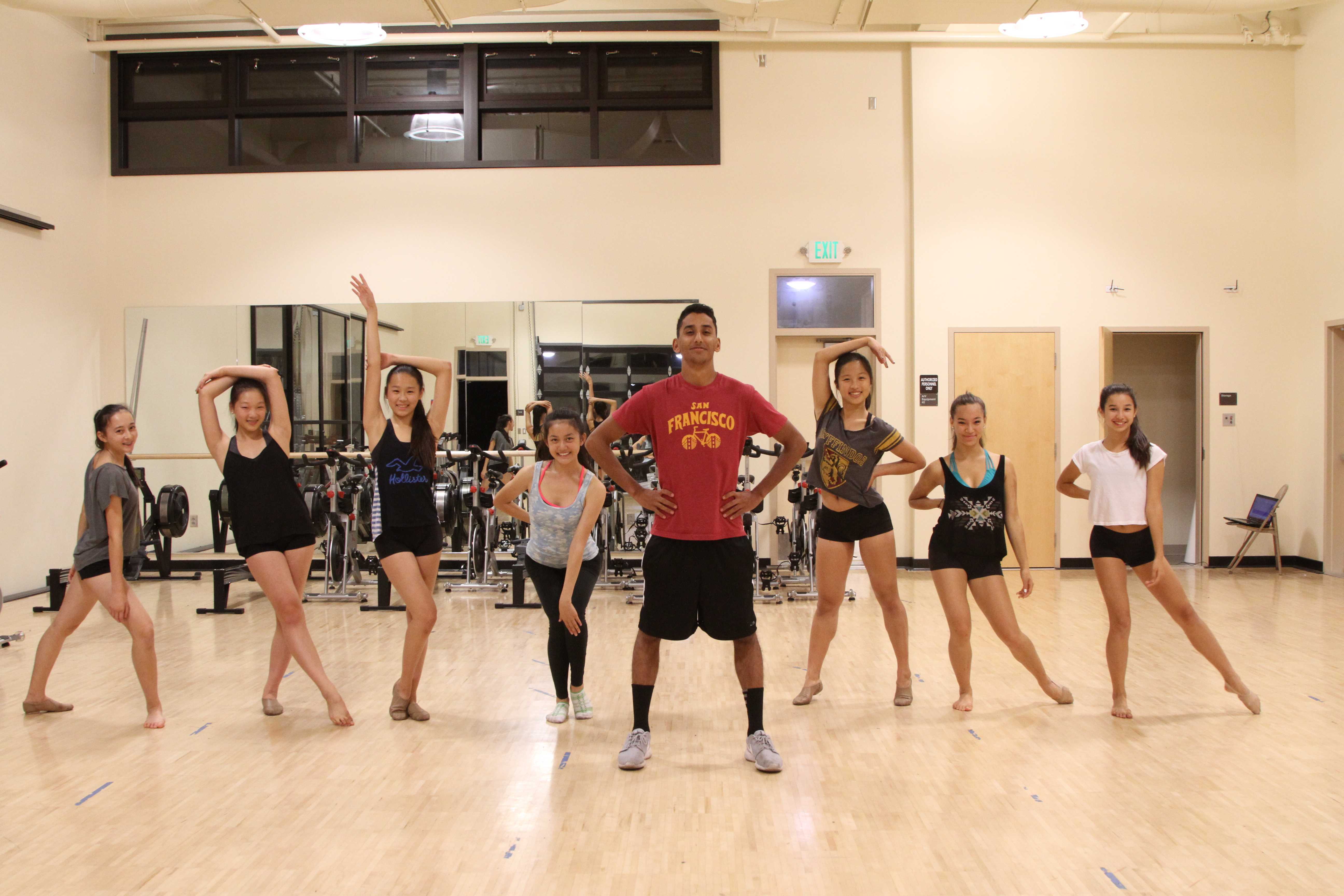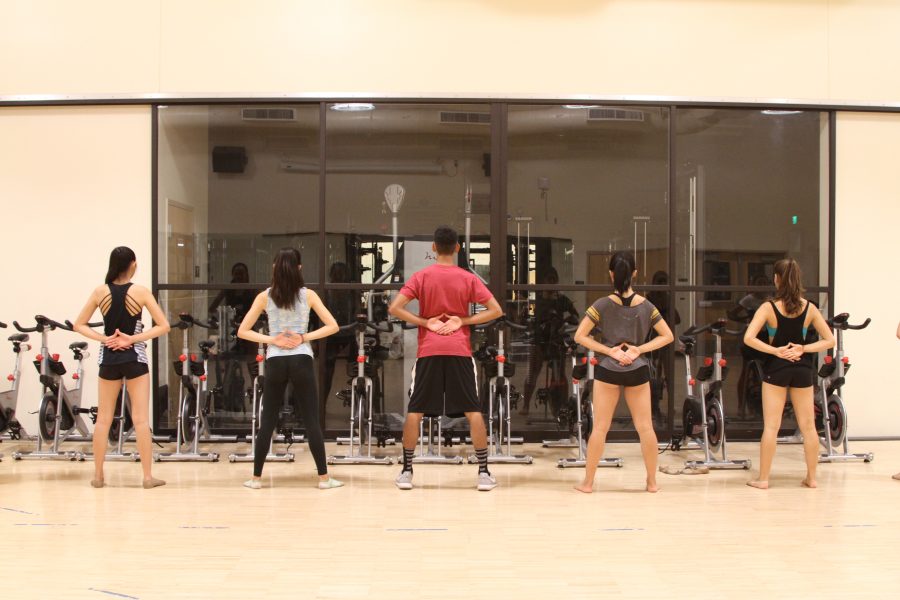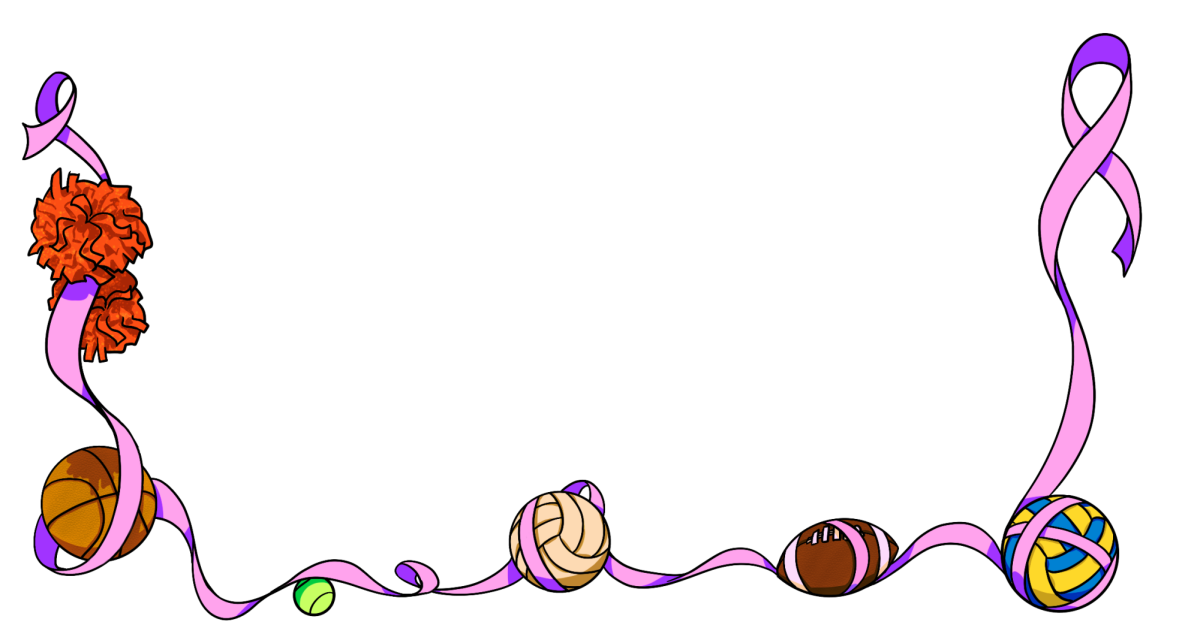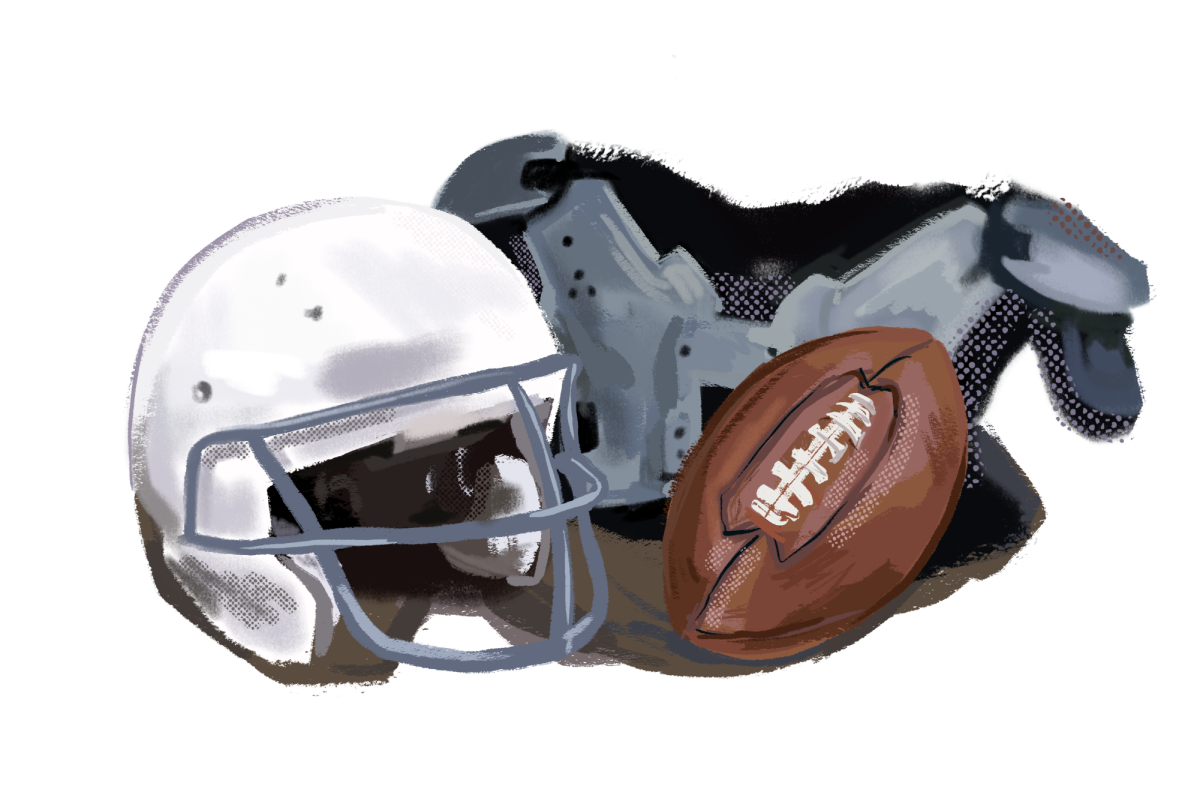Written by Arjun Sahdev
This was the first time I felt uncomfortable in my broken-down Nike Free Runs. As I cruised around the faded red track, the slap of cold air that normally felt refreshing was surprisingly different. The smell of turf that normally wafted through the air was gone. Instead, all I could focus on was the pitter patter of shoes repeatedly striking the track and the laughter that echoed in the background. As the rhythmic scuffling grew louder and closer, the laughter died down. I continued my warm-up jog, but I was not focused on the path ahead. Side whispers and shifty eyes lasered in on me. It was difficult resisting the urge to be self-conscious, when I was amongst 30 female cheerleaders and seven female dancers. This was my introduction as the first male member on the dance team.
After my warm-up lap, I walked into the dance room to greet my new coach and the members of both the cheer and dance team. When the coach introduced me as the newest addition to the dance team, confused and amused eyes darted towards me in judgment. I wanted to act as if I were a normal member of the team, but I didn’t know what that meant. How was the typical member of the dance team supposed to act?

When the stretching commenced, things became slightly awkward. Since cheer and dance practice in the same cramped room at the same time, my sub par form was exposed to both teams. Aside from the fact that I am the hunchback of Notre Dame and cannot touch my toes, I had no idea as to where I was supposed to look. Everywhere around me, girls were stretching and focusing in on themselves on the large mirrored wall, but every so often a girl would catch me awkwardly looking up at the ceiling. I did not feel comfortable with the overexposure of (unnamed) female body parts. Not only that, but if someone mistakenly thought I was checking out a girl, tension in the room would rise.
I thought the stretching was awkward, until I had to learn the choreography of three sideline routines and one full half time routine dance. They were more complicated than any basketball play I had ever learned. Despite the fact that the sidelines were relatively short, 30 seconds at most, they took a lot of effort. They were fast-paced and the dance team picked it up almost instantaneously. While they gracefully spinned, I was recklessly trying not to hit those next to me with my uncoordinated, lengthy arms.
The 90-second halftime dance, on the other hand, took more effort to memorize. While the dancers swiftly maneuvered around me, I lagged behind, trying to mimic their flamboyant poses. I felt out of place beyond belief. In addition to (trying to) memorize the choreography, I learned that one must also maintain good posture, eye contact and a pleasant smile throughout a dance, all of which I did not have.
Although I may have hindered the team, I still tried to keep up with the diverse array of dance moves. I gyrated my hips and perfected my body rolls along with the others.
[wpvideo 5T0cuiCR]
The Gender Imbalances
Even though my induction to the team seemed comical at first, the gender imbalances began to dawn on me once I discussed my presence on the team with the Titanettes. On the surface it was funny watching a six-foot-tall boy try to gingerly navigate the dance floor surrounded by seven miniature backup dancers, but I learned there is much more behind the scenes to school dance, club dance and professional dance that many of us fail to see.
To my surprise, male dancers are put on a pedestal when it comes to dance competitions and team roles. According to co-captain junior Miranda Lin, boys are judged less critically than girl dancers are judged. “The value placed on guys is really high because there are so few [male dancers],” Lin said. “Seeing a guy do the same thing as a girl is a big deal but seeing a girl do it is just good because the standards for guys are lower.”
There is a large number of girls who put in countless hours of work to reach their personal goals, yet do not receive as much attention as males who may reach the same milestone. According to Co-captain senior Alex Kim this disparity in response is baffling. “Guys get more attention– for example it’s so impressive when a guy can do the splits. But there are a bunch of naturally inflexible girls who have to work just as hard as guys do to become more flexible.” Kim said. “Why aren’t they getting as much praise?”
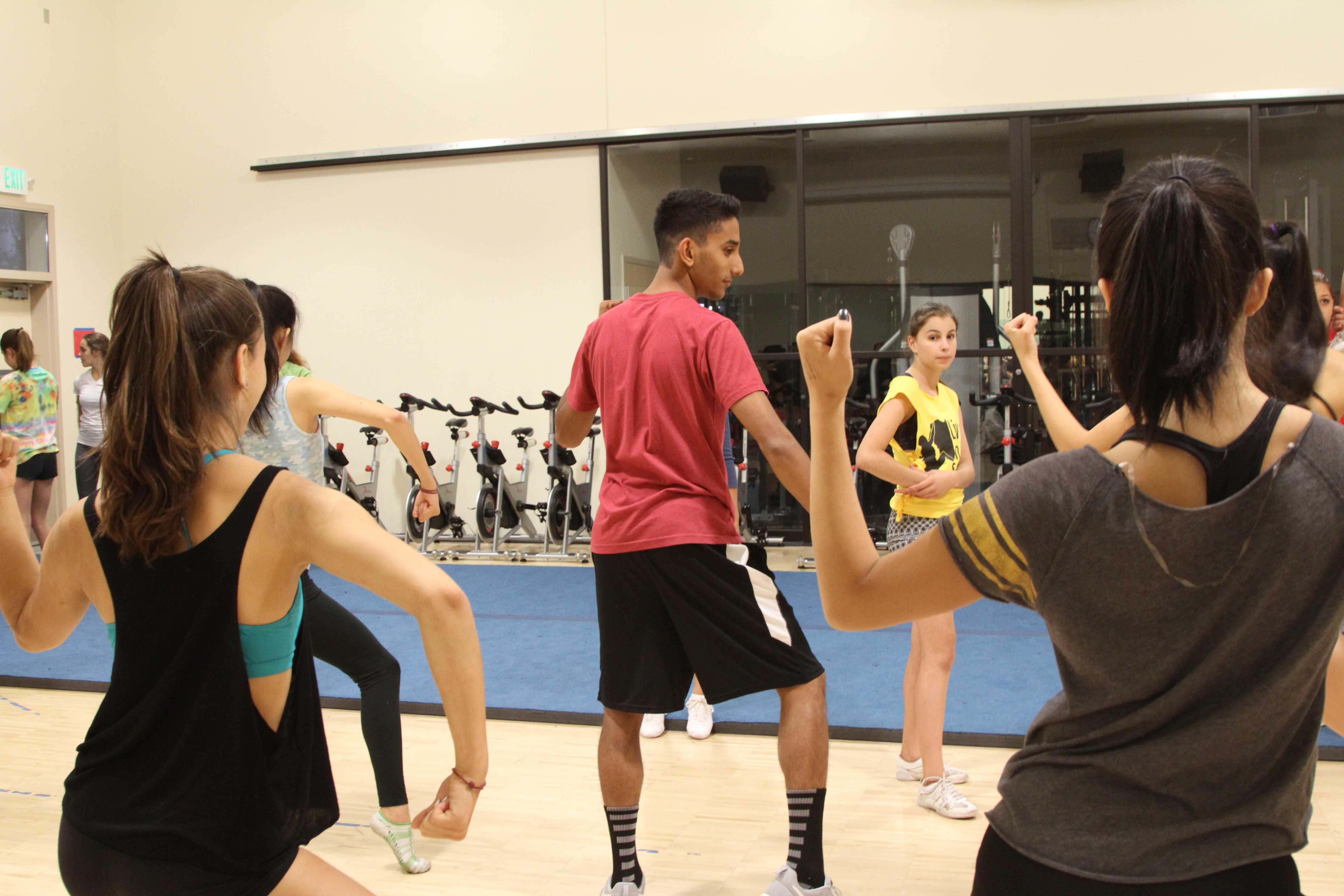
Regardless of the disparity between the praise for guys and girls, the question still remains: why are there no male dancers on the Gunn dance team?
There is a boy on cheer, and the cheer team is currently in the process of opening more spots to boys. During one practice the cheer coach discussed holding an additional tryout exclusive to boys. It was eventually opened to both boys and girls, as there is a current desire from non-members of all genders to compete at nationals for the cheer team.
As the cheer team discussed the potential of having more than one boy compete for the cheer team during nationals, one issue remained unaddressed: the topic of boys joining the dance team. Freshman dancer Naya Lee explains the reasoning behind the absence of discussion. “Having a guy on a dance team is different than having a guy on cheer,” Lee said. “[In dance] you’re not going to be trying for the crazy tricks.” For example, many of the stunts in cheer could benefit from a base of strong guys who can lift and support the fliers, but this is not necessary in dance.

Yet in dance clubs outside of Gunn, such as Dance Connection in Palo Alto, a lot of value is placed on boy dancers. “For club dance teams a guy is more needed than at a dance team at school,” Lee said. According to the Titanettes, all of whom compete outside of school, there is noticeable bias when judges declare the winner. According to Kim, boys tend to receive the upper hand. “Some judges try to keep boys in dance by letting them win,” Kim said.
On the other hand, the Titanettes have never had a male dancer on their team. This may be due to the radiant girl power vibe emitted by the dance team, or the clash of styles prefered by the Titanettes and male dancers. “Hip hop is dominated by guys,” Kim said, whereas, Jazz and Lyrical is what is typically showcased in the Titanettes’ competitions and performances.
There is a common concern that guys do not take the dance try-outs seriously. “When we make try-out events on Facebook, you always see guys posting, ‘Oh I’ll be there’ and it’s a joke” Lin said. This occurs often, despite the fact that there could be a plausible pool of applicants. “There are qualified guys to dance on the dance team,” Kim said. “But no guys ask to try out.”
It is possible male dancers may not try out because many do not know that the dance team is in fact coed. Despite the fact that the group of seven girls goes by the name of Titanettes, does not publicize the tryout to males and has been an all-girls team since its creation, it is still branded as coed. “Technically we’re a coed team but we’ve never been a coed team,” Kim said.
I was rather shocked when I found this out, because it has never been publicized. While the cheer team is reaching out and offering another tryout for guys and girls to join the competition team, the dance team has stayed quiet.

The very essence of the name, Titanettes, is female. “Our vibe is very girl power,” Kim said. In the night rally, they danced to “Salute” by Little Mix. The lyrics say, “Representing all the women, salute,” which is an empowering theme that carries a strong message. However, this female empowering song, along with the others the team dances to, tends to suggest the Titanettes, is an all-girls team, which in fact it is not. I am a male feminist, who agrees female empowerment is a positive, uplifting means to bridge the gender gap; however, it does seem to promote a female-only environment that may intimidate members of the opposite gender.
According to Lee, the dynamics of the dance team would be disrupted if a male dancer joined. “We would feel less comfortable,” Lee said. An all-girls team has many perks that a co-ed team does not offer. “I think we would all definitely get used to it, but we wouldn’t be as close to each other,” she said.
Regardless of the implications of gender roles on the dance team, one cannot neglect the dynamics of other co-ed teams at Gunn. The wrestling team, in particular, has a motley crew of athletes consisting of both genders of different heights, weight classes and body types. According to varsity captain senior Tanner Kerrins, around five to 10 girls tried wrestling at the beginning of the year—five of whom stayed the duration of the season.
One can argue wrestling is a male-dominated sport, just as dance is seen as female-dominated. However it has been shown that females can thrive and succeed on the wrestling team despite the stereotypes against their gender. Alumna Cadence Lee, for example, won the Santa Clara Valley Athletic League boys’ championships 2014. Some might say she is an outlier, but there were and still are active female wrestlers, who continue to prove that gender roles can be dissolved, even in a contact sport like wrestling.

Solutions to this problem as suggested by the dance team include the formation of a hip hop dance team, one that could officially compete and represent Gunn at formal competitions. The turnout of guys to the Titanettes tryouts may remain low, but for a hip hop team the numbers may rise significantly. According to freshman Christiane Helmer of the Titanettes, the dance team will be more outspoken in future recruiting processes. “I think it should be publicized more, but I feel guys wouldn’t join because they wouldn’t want to be the only guy,” Helmer said. She hopes raising awareness of the team’s coed status will encourage male dancers to join.
The overall experience
Throughout the progression of my dancing career with the Titanettes, the disparity in gender roles initially seemed to hinder the fluidity of practice. However, once I developed a rapport with the dancers, the fear of shedding my hard exterior subsided. I never knew I had the gumption to assume such a position, as the first guy ever on the team, but it wasn’t bad at all. After shamelessly persisting through the stretching and fiercely practicing the fundamentals, I can look back on my performance with pride knowing I ventured far beyond the borders of my comfort zone. Although I have yet to master the aerial, the splits, and most challenging of them all, the touching of the toes, I learned a lot from the group of talented dancers.
As an honorary Titanette, I may not have brought much skill into the room, but I contributed a willingness to learn and grow. Once I vanquished the restrictive awkwardness, dancing was less of a chore and more of a means to connect with my new team.
Looking back on the experience, Kim, too, realizes why she and the others joined the team. Although gender plays a pivotal role in dance, its barriers begin to dissolve once the focus shifts from who one is dancing with to why one is dancing. “As long as we all work together and remain a team, then it doesn’t matter what gender our teammate is,” she said. “We joined the team to dance.”
